Ryan Roggenkemper
Recognition-Aware Learned Image Compression
Feb 01, 2022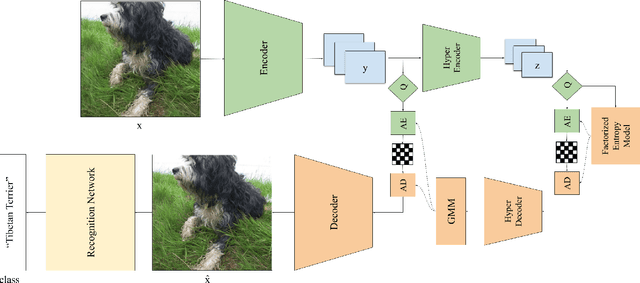
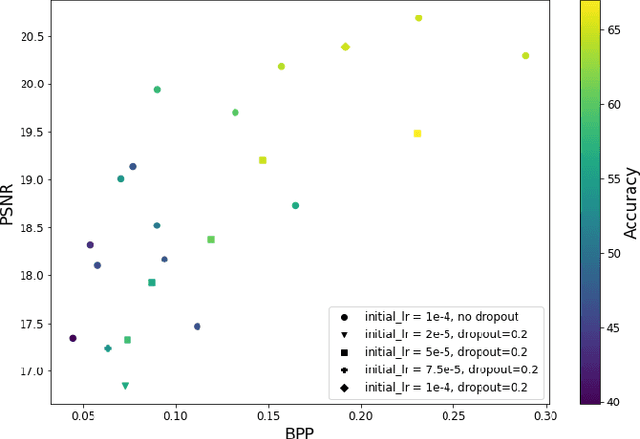


Abstract:Learned image compression methods generally optimize a rate-distortion loss, trading off improvements in visual distortion for added bitrate. Increasingly, however, compressed imagery is used as an input to deep learning networks for various tasks such as classification, object detection, and superresolution. We propose a recognition-aware learned compression method, which optimizes a rate-distortion loss alongside a task-specific loss, jointly learning compression and recognition networks. We augment a hierarchical autoencoder-based compression network with an EfficientNet recognition model and use two hyperparameters to trade off between distortion, bitrate, and recognition performance. We characterize the classification accuracy of our proposed method as a function of bitrate and find that for low bitrates our method achieves as much as 26% higher recognition accuracy at equivalent bitrates compared to traditional methods such as Better Portable Graphics (BPG).
Minority Reports Defense: Defending Against Adversarial Patches
Apr 28, 2020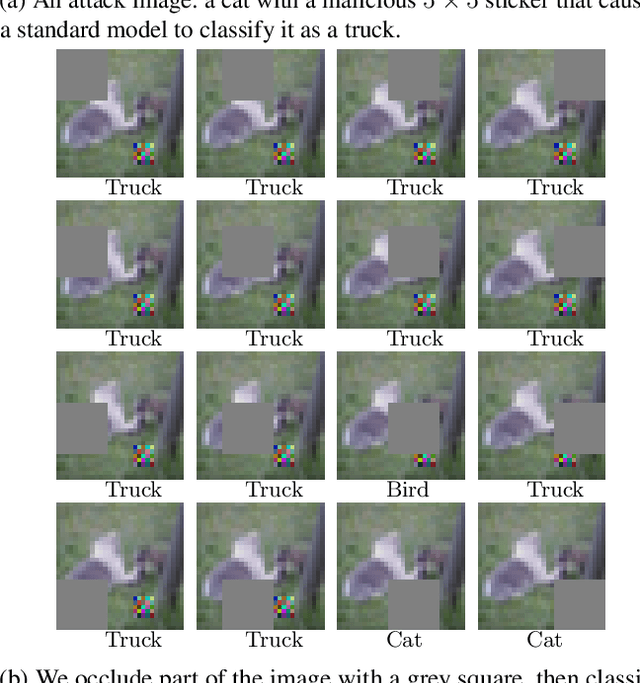
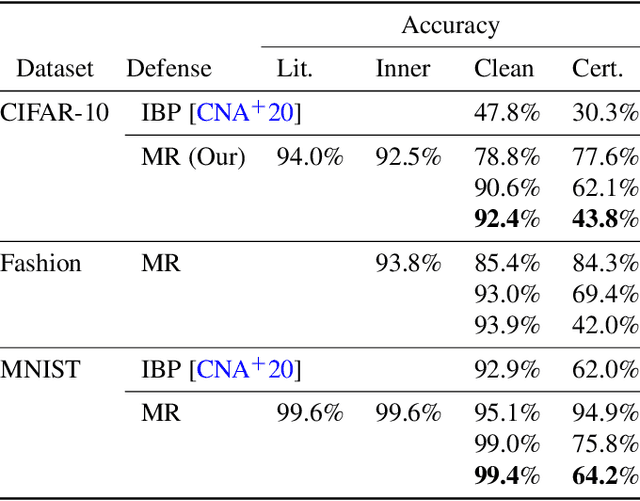
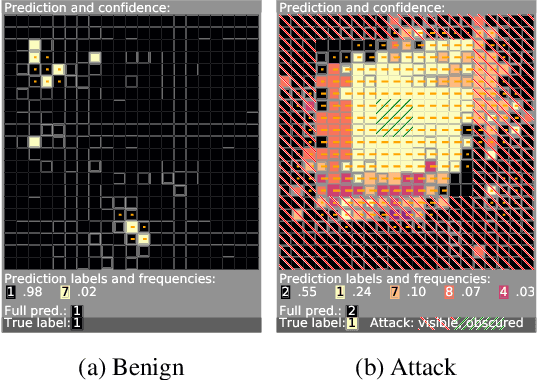

Abstract:Deep learning image classification is vulnerable to adversarial attack, even if the attacker changes just a small patch of the image. We propose a defense against patch attacks based on partially occluding the image around each candidate patch location, so that a few occlusions each completely hide the patch. We demonstrate on CIFAR-10, Fashion MNIST, and MNIST that our defense provides certified security against patch attacks of a certain size.
 Add to Chrome
Add to Chrome Add to Firefox
Add to Firefox Add to Edge
Add to Edge